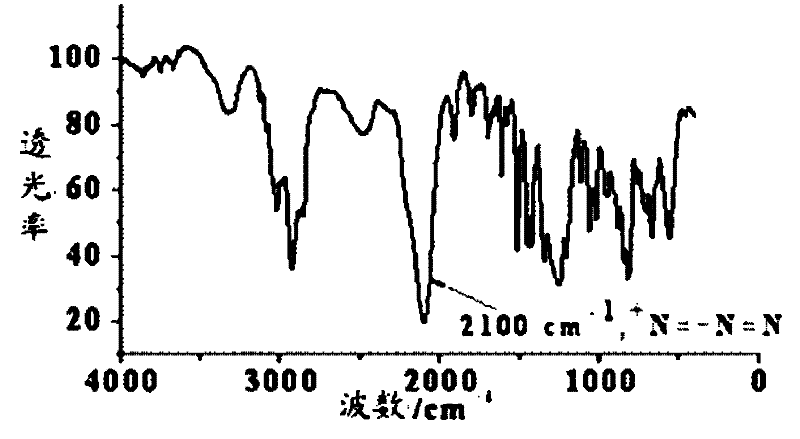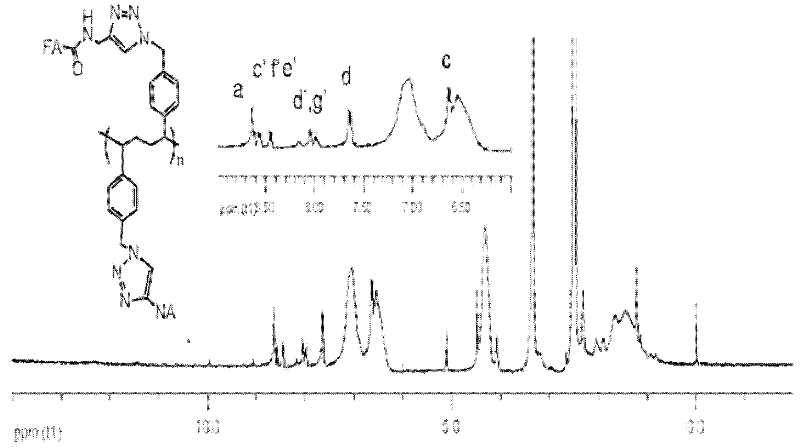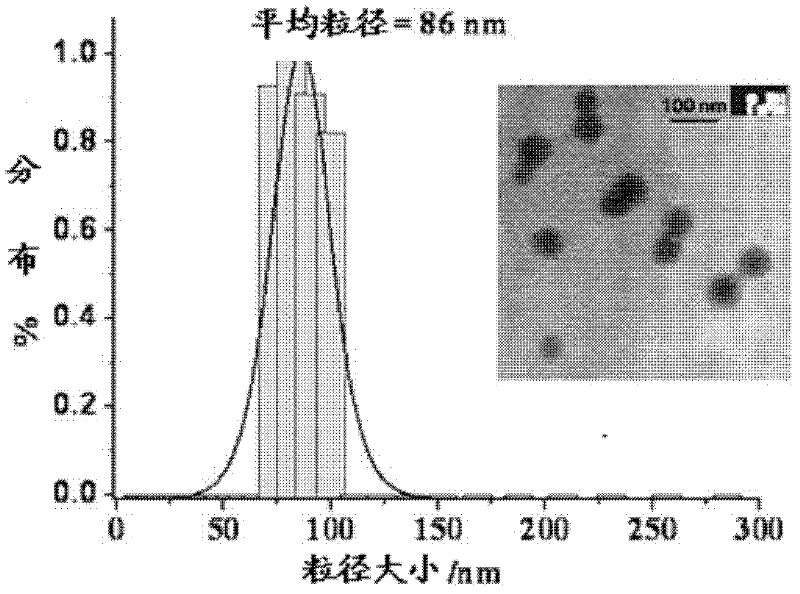A fluorescent targeting nanomaterial and its preparation method
A technology of nanomaterials and fluorescent materials, applied in the field of fluorescent targeting nanomaterials and its preparation, can solve problems such as unseen technical solutions, complex synthesis of copolymer carriers, difficulty in introducing active molecules, etc., to achieve uniform distribution, simple structure, and convenient synthetic effect
- Summary
- Abstract
- Description
- Claims
- Application Information
AI Technical Summary
Problems solved by technology
Method used
Image
Examples
Embodiment 1
[0029] Example 1: Preparation of azide poly-p-chloromethylstyrene carrier
[0030] (1) Dissolve 5g of poly-p-chloromethylstyrene in 50mL of DMSO, add 10g of sodium azide, and react at room temperature for 5 hours. Pour the above reaction solution into methanol to precipitate a white precipitate. Filter and wash the filter cake with water , and dried in vacuum to obtain azide poly-p-chloromethylstyrene carrier.
[0031] (2) Dissolve 2g of poly-p-chloromethylstyrene in 200mL of DMSO, add 20g of sodium azide, and react at 100°C for 2 hours. Pour the above reaction solution into methanol, and a white precipitate precipitates. Filter, wash and filter with water. The cake was vacuum-dried to obtain azide poly-p-chloromethylstyrene carrier.
[0032] (3) Dissolve 5g of poly-p-chloromethylstyrene in 100mL of DMSO, add 15g of sodium azide, and react at 50°C for 4 hours. Pour the above reaction solution into methanol, and a white precipitate precipitates. Filter, wash and filter with wa...
Embodiment 2
[0034] Example 2: Preparation of Targeted Fluorescent Polymers
[0035] (1) Get respectively 2.0g of folic acid, 1.5g of alkynyl coumarin, and 6.0g of azide poly(p-chloromethylstyrene) prepared in Example 1(1), dissolve them in 20mL DMSO, and react with stirring at room temperature for 3 hours, Then, the reaction solution was poured into methanol, and a yellow precipitate was precipitated, filtered, the filter cake was washed, and vacuum-dried to obtain the targeted fluorescent polymer folic acid-coumarin-poly-p-chloromethylstyrene.
[0036] (2) get folic acid 1.5g respectively, alkynyl rhodamine 3.0g, azide poly-p-chloromethylstyrene 10g prepared in embodiment 1 (2), be dissolved in 30mL DMSO, stir reaction at room temperature for 5 hours, then The reaction solution was poured into methanol, a yellow precipitate was precipitated, filtered, the filter cake was washed, and vacuum-dried to obtain the targeted fluorescent polymer folic acid-rhodamine-poly-p-chloromethylstyrene. ...
Embodiment 3
[0039] Example 3: Preparation of targeted fluorescent nanomaterials
[0040] (1) Dissolve the folic acid-coumarin-poly-p-chloromethylstyrene obtained in Example 2(1) in tetrahydrofuran, prepare 5mL of 5% tetrahydrofuran solution, slowly add 10mL of water dropwise, stir for 5 hours, and dialyze The tetrahydrofuran was removed, followed by ultrasonic dispersion to obtain stable dispersed nanomaterials.
[0041] (2) Dissolve the folic acid-rhodamine-poly-p-chloromethylstyrene obtained in Example 2(2) in tetrahydrofuran, prepare 10 mL of 1% tetrahydrofuran solution, slowly add 50 mL of water, stir for 10 hours, and dialyze to remove THF, followed by ultrasonic dispersion to obtain stable dispersed nanomaterials.
[0042] (3) Dissolve the folic acid-methylcyanine-poly-p-chloromethylstyrene obtained in Example 2(3) in tetrahydrofuran, prepare 30 mL of 10% tetrahydrofuran solution, slowly add 150 mL of water, stir for 1 hour, and dialyze The removal of THF followed by ultrasonic di...
PUM
 Login to View More
Login to View More Abstract
Description
Claims
Application Information
 Login to View More
Login to View More - R&D
- Intellectual Property
- Life Sciences
- Materials
- Tech Scout
- Unparalleled Data Quality
- Higher Quality Content
- 60% Fewer Hallucinations
Browse by: Latest US Patents, China's latest patents, Technical Efficacy Thesaurus, Application Domain, Technology Topic, Popular Technical Reports.
© 2025 PatSnap. All rights reserved.Legal|Privacy policy|Modern Slavery Act Transparency Statement|Sitemap|About US| Contact US: help@patsnap.com



